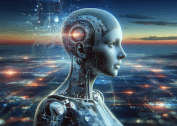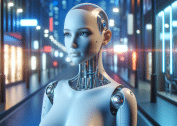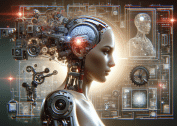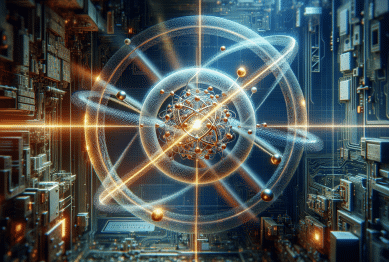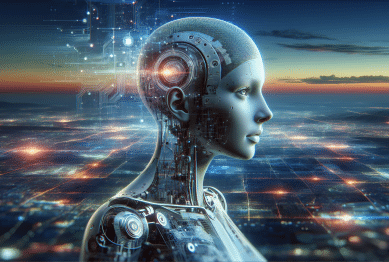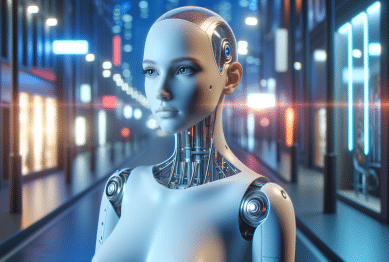Artificial intelligence is making waves in daily routines, workplaces, and how individuals solve problems. This guide unpacks what artificial intelligence means, how machine learning works, and the practical effects of these technologies on productivity, decision-making, and digital safety.
Exploring Artificial Intelligence and Its Foundations
Artificial intelligence, or AI, refers to computer systems that mimic human intelligence processes such as problem-solving, learning, perception, and language understanding. The foundation of modern AI involves techniques like data analytics and machine learning algorithms that enable computers to identify patterns, draw insights, and predict outcomes with increasing accuracy. These systems also employ deep learning—an advanced subset of machine learning—which leverages neural networks to analyze large sets of data and recognize complex relationships and trends.
Developers build and train AI models by feeding them enormous amounts of text, images, or numbers. The system makes sense of this information, learns from its mistakes, and gradually improves its predictions or recommendations over time. This continuous improvement is essential, making AI tools increasingly reliable for tasks ranging from language translation to facial recognition. The structured approach to training data also reduces errors, streamlining the efficiency of the system and its outputs.
Understanding basic AI principles enriches our digital literacy and allows individuals to better appreciate the invisible influence of AI in modern technology. Terms like natural language processing, predictive modeling, and neural networks become more than buzzwords—they represent the changing face of search engines, autonomous vehicles, and smart devices. As these AI systems advance, they help automate complex tasks and reveal new insights, fundamentally altering our technological landscape.
How Machine Learning Drives Decision-Making
Machine learning is a core part of AI, relying on algorithms that continually process data and refine their output based on new patterns. Businesses use machine learning models to improve decision-making, whether it’s recommending products, detecting fraudulent transactions, or optimizing supply chains. For example, retail companies might analyze customer purchase histories to tailor marketing messages or suggest new items, increasing engagement through data-driven recommendations.
Healthcare organizations benefit as well, using machine learning to identify disease risk factors, flag anomalies in imaging data, and personalize treatment plans. The predictive capabilities of these models not only accelerate diagnoses but also reduce the margin for error in critical scenarios. In financial sectors, real-time data analytics powered by machine learning algorithms can identify suspicious account activity instantly, protecting users from fraud with minimal delay.
The transformative potential of these approaches extends beyond professional sectors. Ordinary consumers interact with machine learning every day when streaming music, using navigation apps, or engaging with social networks. The seamless delivery of content, suggestions, and alerts demonstrates just how deeply integrated machine learning has become in shaping decision-making processes on a broad scale.
AI’s Role in Productivity and Automation
Productivity apps increasingly use artificial intelligence to help individuals and teams work smarter, not harder. Smart email tools can prioritize urgent messages, organize conversations, and even suggest automated replies, saving time and reducing digital clutter. The same principles apply to document editing, task management, and calendar scheduling; intelligent assistants handle repetitive or routine work, freeing up time for more creative or challenging tasks.
Automation is central to these advances. Robotic process automation (RPA) uses AI-driven bots to carry out tasks in finance, logistics, and customer service, improving accuracy and reducing manual labor costs. Businesses gain competitive advantage by deploying these technologies to streamline workflows, process large batches of information, and ensure consistency across operations. The benefits extend to remote work environments, where digital assistants help organize meetings, summarize discussions, and maintain focus.
On a personal level, smart devices driven by AI continually learn routines, adapt to individual preferences, and suggest optimal schedules or reminders. This boost in productivity is not just about completing more tasks but about achieving them with less mental effort and greater satisfaction. As new AI-powered solutions emerge, the possibilities for automation and improved efficiency multiply every year, offering users tangible enhancements in daily workflows.
Privacy, Security, and Ethics in AI Adoption
The rapid expansion of artificial intelligence has brought privacy and data security to the forefront. Organizations must balance innovation with responsible AI deployment, ensuring that sensitive information remains protected while technologies evolve. Privacy concerns often arise when AI systems analyze personal data to deliver tailored experiences or predictive services, making rigorous cybersecurity protocols non-negotiable.
AI developers are increasingly transparent about how their systems use and store data. Many promote the adoption of ethical AI frameworks, focusing on fairness, accountability, and explainability. For instance, ensuring that algorithms do not unintentionally discriminate among users is a major research focus—one that calls for audit trails and model interpretability. Clear user consent frameworks and robust anonymization measures further reinforce ethical standards in the use of big data analytics.
Individuals also play a role by staying informed about AI privacy features and regularly reviewing data permissions on apps and services they use. Regulatory bodies such as the European Union are shaping global standards, setting out rights for users and obligations for companies deploying AI-powered products. By fostering a culture of security and ethical responsibility, the digital ecosystem evolves in a way that empowers users while safeguarding fundamental rights.
Real-World Applications of AI in Daily Life
AI technologies are embedded in countless daily interactions, often working behind the scenes. Virtual assistants like those found in smartphones use natural language processing to interpret commands and provide helpful answers. Many smart home devices learn user behavior over time to optimize lighting, temperature, and even grocery shopping, demonstrating the real-world integration of data analytics and predictive modeling.
Healthcare has seen profound AI contributions, as algorithms process huge datasets to support researchers in developing life-saving treatments or predicting outbreaks. Personalized medicine relies on machine learning to tailor therapy and analyze genetic data, advancing the science of individualized care. Meanwhile, urban planning benefits from predictive analytics to manage traffic flows, reduce congestion, and monitor air quality, showing the multi-sector impact of AI-powered insights.
Education and personal development are also being transformed. Distance learning platforms use intelligent recommendations to guide students through courses, while AI-driven feedback helps learners understand their strengths and areas needing growth. From smart search to adaptive content, artificial intelligence continues to reshape how we learn, communicate, and experience the world.
What the Future Holds for Artificial Intelligence
The evolution of AI is ongoing and dynamic. Advances in natural language processing, reinforcement learning, and edge computing promise to bring intelligence closer to users and devices. These leaps will create new opportunities for problem-solving and entertainment, but they also raise questions about digital equity and access to sophisticated technology.
As industries seek innovative AI solutions, a focus on responsible development and transparent standards remains vital. Collaboration between research institutions, regulators, and businesses will shape the next generation of applications, ensuring safety and fairness are prioritized. For those exploring technology careers, understanding AI at foundational and practical levels is no longer optional—it opens pathways to innovation and personal empowerment.
Looking forward, the relationship between humans and AI will grow more integrated. Smarter systems may anticipate needs before they arise, help bridge communication gaps worldwide, and even assist in complex research that spans climate science and social challenges. By staying engaged in the ongoing conversation about AI’s implications, users can be prepared to adapt and thrive in an increasingly intelligent digital world.
References
1. National Institute of Standards and Technology. (n.d.). Artificial Intelligence. Retrieved from https://www.nist.gov/artificial-intelligence
2. U.S. Department of Energy. (n.d.). Machine Learning in Science. Retrieved from https://www.energy.gov/science-innovation/machine-learning-science
3. World Economic Forum. (n.d.). 7 ways AI is transforming everyday life. Retrieved from https://www.weforum.org/agenda/2022/01/ways-ai-transforming-everyday-life/
4. European Commission. (n.d.). Ethics guidelines for trustworthy AI. Retrieved from https://digital-strategy.ec.europa.eu/en/library/ethics-guidelines-trustworthy-ai
5. National Institutes of Health. (2022). Artificial intelligence in healthcare. Retrieved from https://www.nih.gov/news-events/artificial-intelligence-healthcare
6. Stanford University. (n.d.). Artificial Intelligence Index Report. Retrieved from https://aiindex.stanford.edu/report/



